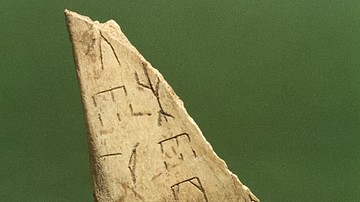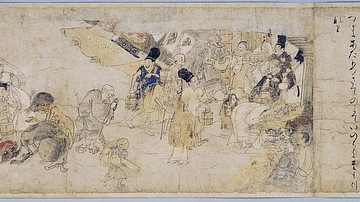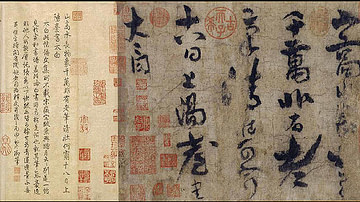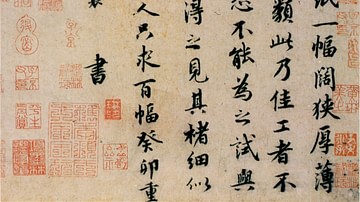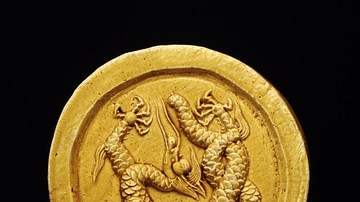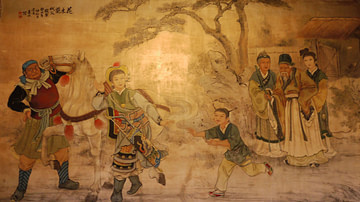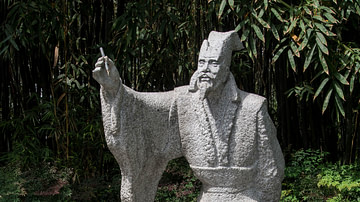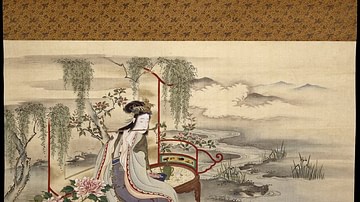Ancient Chinese literature developed following the evolution of script which evolved from divination practices of the Shang Dynasty (1600-1046 BCE). The pictographs made on oracle bones by diviners became the script known as Jiaguwen (c. 1600-1000 BCE) which developed into Dazhuan (c. 1000-700 BCE), Xiaozhuan (700 BCE to present), and Lishu (the so-called "Clerky Script", c. 500 BCE).
From these came Kaishu, Xingshu, and Caoshu, cursive scripts which writers later used in prose and poetry to create the great works of Chinese literature. The following collection presents a brief overview of this development.
